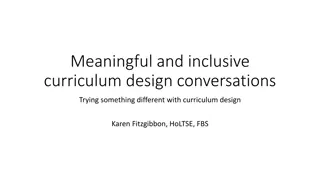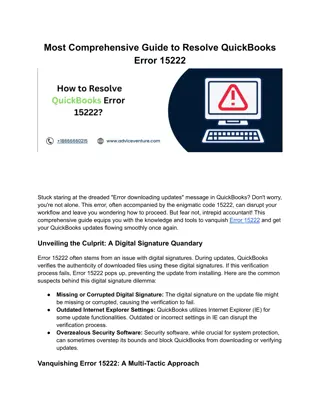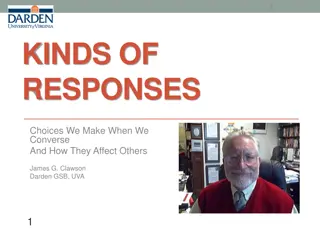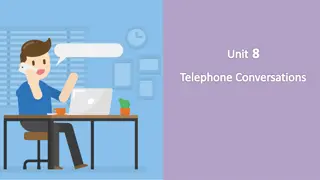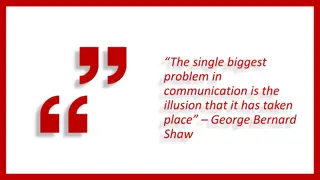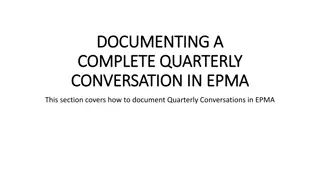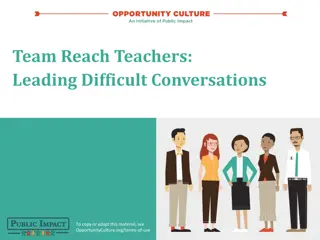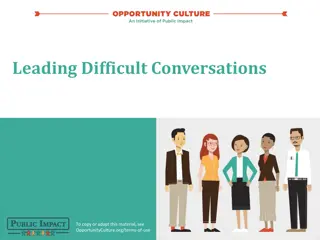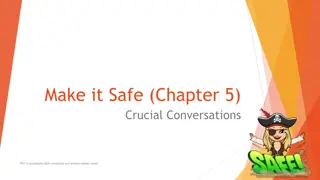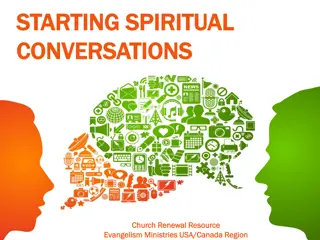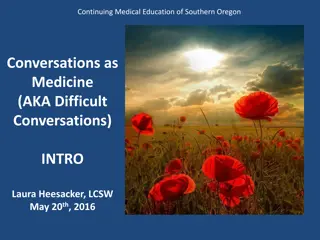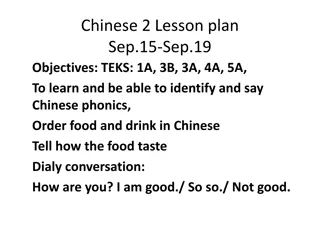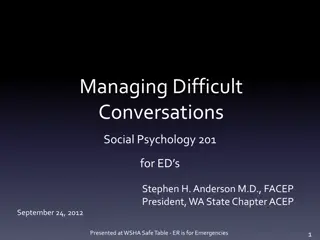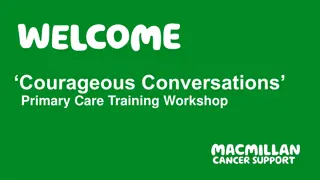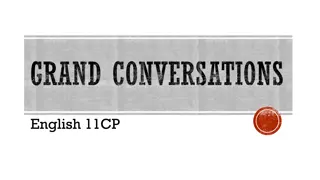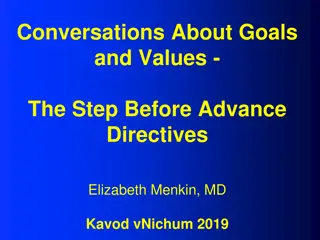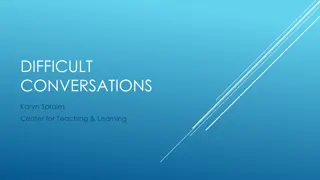
Effective Strategies for Communicating Difficult News
Learn how to effectively communicate difficult news with strategies such as active listening, maintaining a 2-to-1 communication ratio, and staying above conflicts. Discover the importance of empathy and understanding in handling dreaded conversations.
Download Presentation

Please find below an Image/Link to download the presentation.
The content on the website is provided AS IS for your information and personal use only. It may not be sold, licensed, or shared on other websites without obtaining consent from the author. If you encounter any issues during the download, it is possible that the publisher has removed the file from their server.
You are allowed to download the files provided on this website for personal or commercial use, subject to the condition that they are used lawfully. All files are the property of their respective owners.
The content on the website is provided AS IS for your information and personal use only. It may not be sold, licensed, or shared on other websites without obtaining consent from the author.
E N D
Presentation Transcript
Dreaded Conversations Effectively Communicating Difficult News Mary Pat Dutton Campus Registrar, WSU Vancouver Julia Pomerenk University Registrar, WSU Pullman October 2015
Dreaded Conversations And . . . Communicating Well to Reduce the NEED for Dreaded Conversations
Special Thanks to These Colleagues Angela Bigby, Registrar and Director of Student Services, University of Southern Nevada Becky Bitter, Assistant Registrar, WSU Lori Blake, Assistant Registrar, University of Puget Sound Danielle Eastman and Francis Morgan-Gallo, from University Recreation, WSU Melynda Huskey, Interim Vice President for Student Affairs, WSU Karen Wynkoop, Controller, Clark College
Part One: Communicating Well
Maslows Pyramid of Needs Morality, creativity, spontaneity, problem solving, lack of prejudice, acceptance of facts Self-Actualization Self-esteem, confidence, achievement, respect of others, respect by others Esteem Friendship, family, sexual intimacy Love, Belonging Security of body, employment, resources, morality, family, health, property Safety Breathing, food, water, sex, sleep, homeostasis, excretion Physiological
Aim to Stay Above the Food Fight Level As far as I can see, this meeting to air out our communication problems has been a complete success.
Listen Well The most basic and powerful way to connect to another person is to listen. Just listen. Perhaps the most important thing we ever give each other is our attention. Rachel Naomi Remen, MD (author and storyteller)
Communications 2 to 1 Ratio We have two ears and one mouth so that we can listen twice as much as we speak. Epictetus (Greek philosopher)
The Numbers of Meaning In communication about feelings and attitudes, we receive our meaning: 55% based on what we see 38% based on how it sounds (tone, volume, and speed) 7% based on the actual words that are spoken Albert Mehrabian, UCLA professor
Communication Tips What have you learned from good communicators? What have you learned from your own good communication?
Be an Active Communicator. Hear the Words. Notice the Non-verbal Communication. Re-frame and Re-peat: In your own words, make sure that the message you received is the message that the sender intended
Speak from the Heart Hear and understand me. Even if you disagree, don t make me wrong. Acknowledge the greatness within me. Remember to look for my loving intention. Tell me the truth with compassion. Hyler Bracey, Managing from the Heart
Consider Different Possibilities How Fascinating! Tell me more about that . . . Fix the problem. Don t fix the blame. Remember Rule #6. Set yourself and the situation in a larger setting. Where is the other person coming from? From The Art of Possibility: Transforming Professional and Personal Life, Rosamund Stone Zander and Benjamin Zander
Part Two: The Difficult Conversations
Even when we are communicating well, there are certain conversations we just don't want to have. Please share examples.
Elements of a Difficult Conversation Content Relationship Process
Content What do you need to say? Make a list. Less is more as long as it s enough. Keep asking yourself, What s most important?
Relationship Who are you at work? You, the very fine person You, the job title
Relationship How do you balance YOU and YOU when they are in conflict? What message do you want to deliver? What message does the institution need to deliver, through you? Where do they overlap? (C.K. Gunsalus, The College Administrator s Survival Guide)
Process We are not negotiating with our enemy we are trying to improve our organization. Robert J. Spitzer, The Spirit of Leadership: Creativity and Change in Organizations Optimizing
Process Focus on: the behavior, not the person a description, not an evaluation sharing information, not giving advice usefulness to the recipient, not satisfaction for you the most important information, not everything you d like to share
A structure for difficult conversations 1) Observe without evaluation. 2) State your feeling, being careful not to substitute thinking for feeling. 3) Express your need concretely. 4) Use clear, positive action language to make request. When your project report was late, I felt embarrassed and angry, because other people were waiting for that information. I need you to meet deadlines when I assign them and tell me right away if there are problems.
Practice a Difficult Conversation Pick a partner and practice, using the examples we're handing out. I saw . . . (Observe without evaluation.) (State your feeling, being careful not to substitute thinking for feeling.) I feel . . . I need . . . (Express your need concretely.) (Use clear, positive action language to make request.) I request . . .
Dreaded Conversation Practice Scenarios #1 you announced a new office policy that employees had to notify supervisors when they were making use of sick leave. At yesterday s staff meeting, an employee rolled his eyes at you when #2 overheard using profane language while talking loudly on her phone. Earlier today, an employee slammed her office door and could be #3 or three times a week for the past month. Each week, you have met with the employee to clarify expectations. An employee was late to work today. This employee has been late two #4 community with incorrect deadline dates. Yesterday, an employee sent out an email notice to the university
The Most Difficult Conversations Consult with experts first: Human Resources, the Attorneys-General, your supervisor. Prepare an outline, so you don t miss anything important. Be calm, clear, and straightforward. Allow the other person to express his or her emotions without being controlled by them. Create a firm conclusion to the conversation with next steps.
This has been a WSU Training Videoconference If you wish to have your attendance documented in your training history, please notify Human Resource Services within 24 hours of today's date: hrstraining@wsu.edu
Thank you! Mary Pat Dutton marypat.dutton@wsu.edu. Julia Pomerenk pomerenk@wsu.edu

